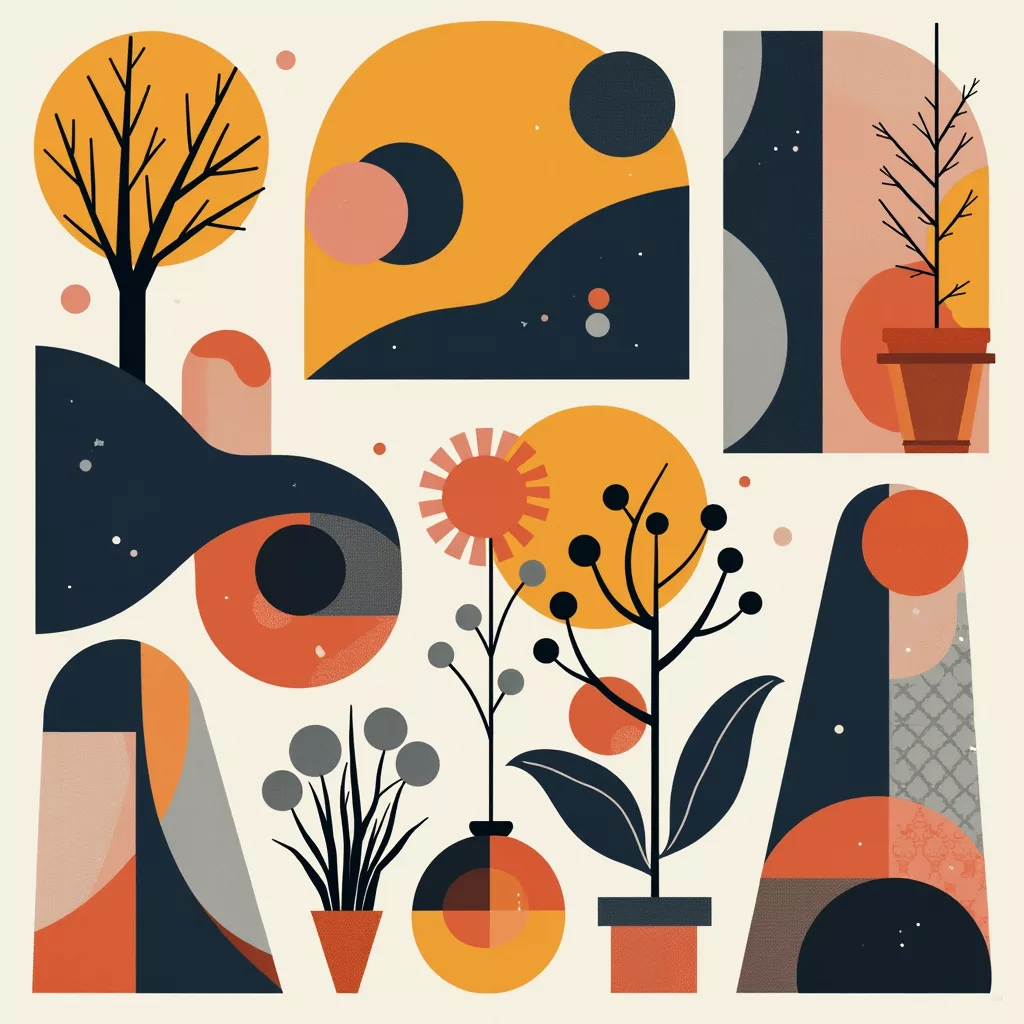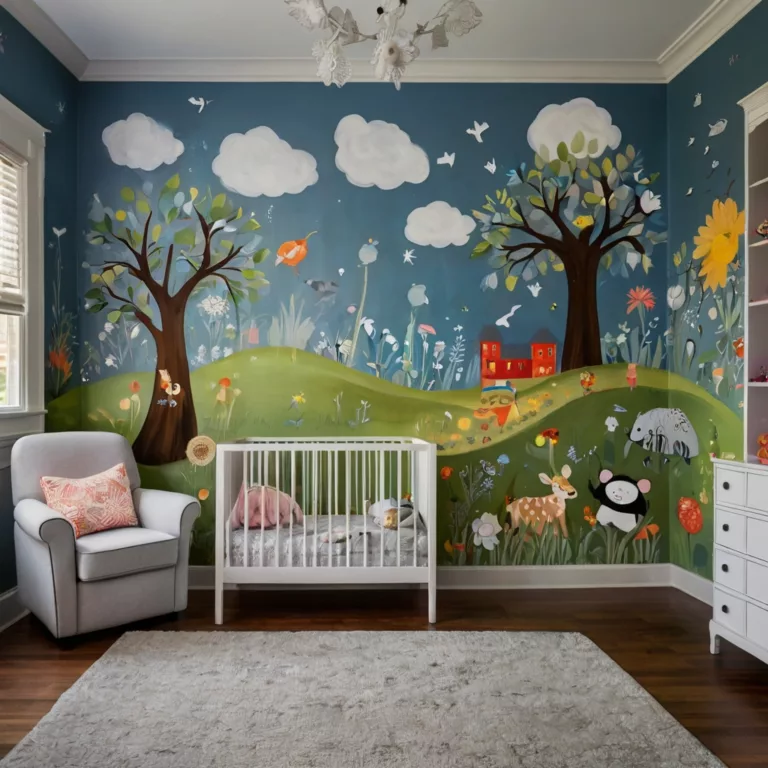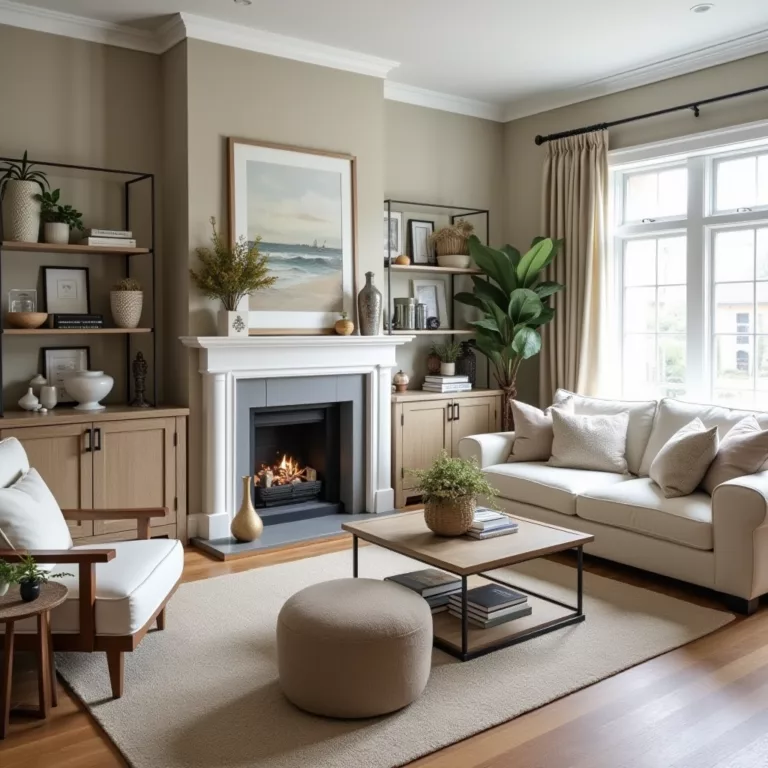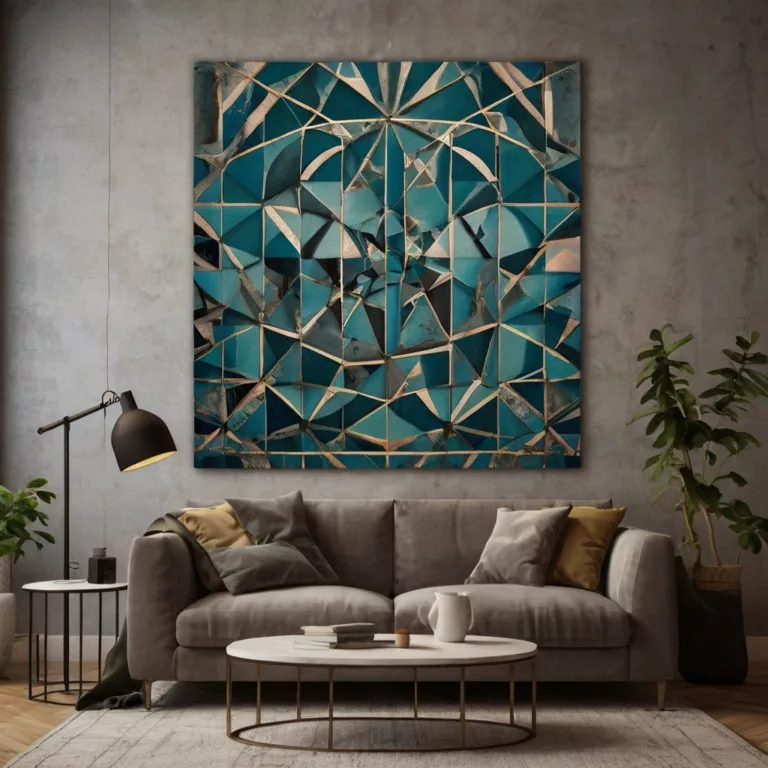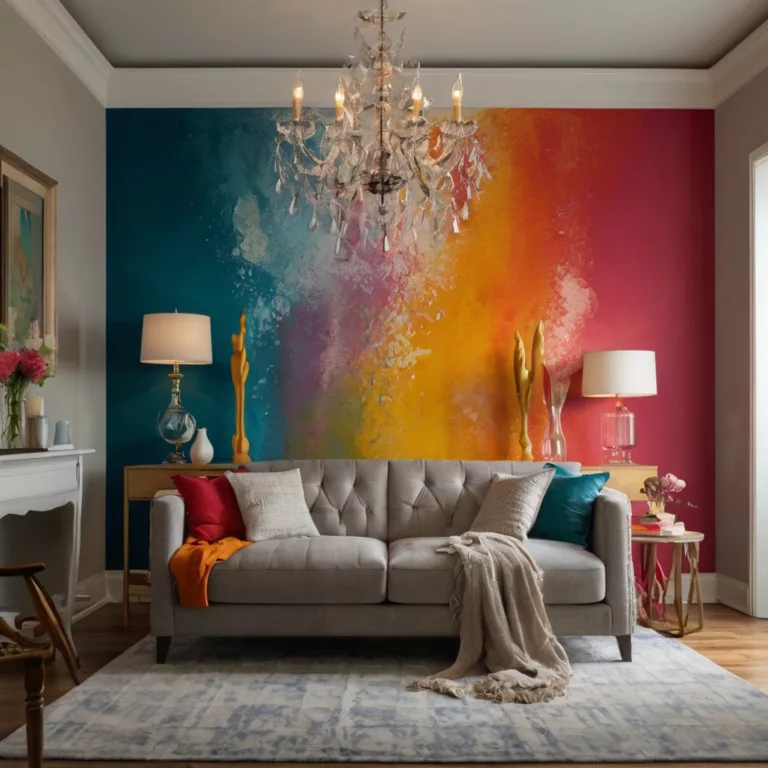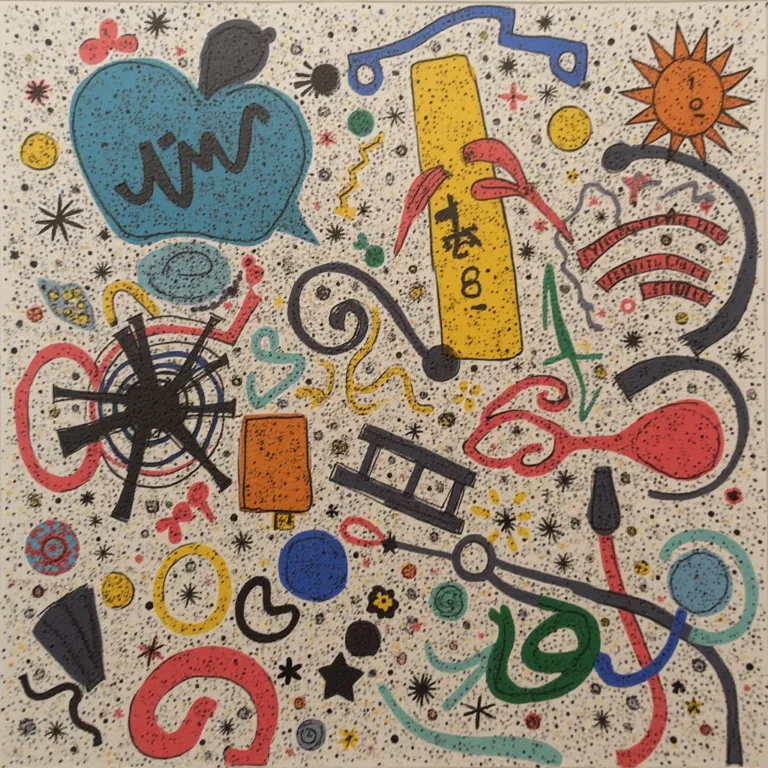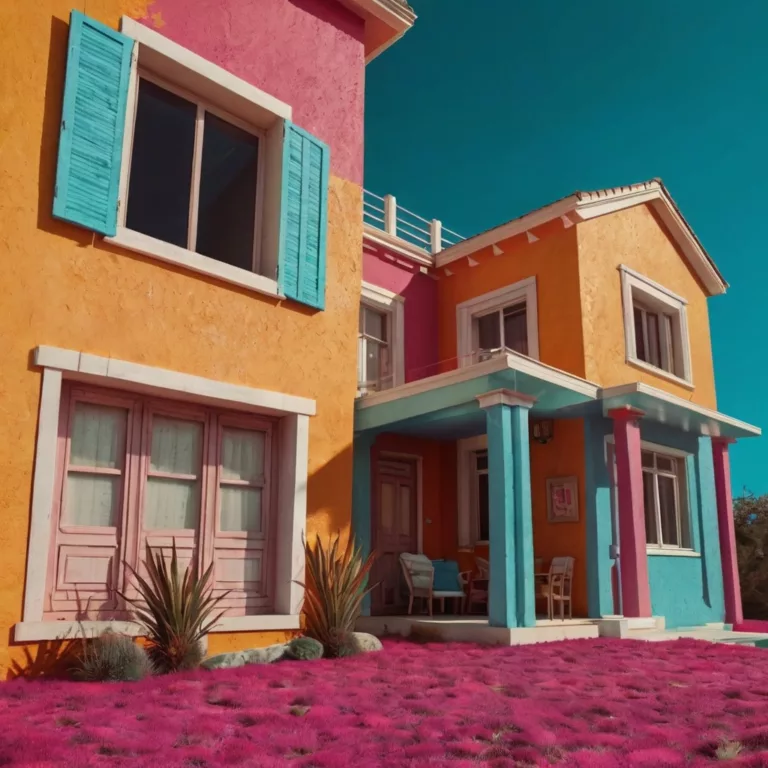Geometric Art Statements
In the vast landscape of artistic expression, geometric art stands as a distinctive voice—one that speaks through the precise language of shapes, patterns, and mathematical relationships. From ancient architectural ornamentation to cutting-edge digital installations, geometric art has persistently captivated human imagination across cultures and centuries. Its power lies not merely in visual appeal but in its ability to communicate complex concepts through fundamental forms, creating statements that resonate on both intellectual and visceral levels.
The Historical Tapestry of Geometric Expression
The human fascination with geometric form dates back to our earliest artistic endeavors, revealing a consistent cross-cultural attraction to ordered visual structures.
Ancient Geometric Foundations
Long before formal mathematics developed as a discipline, ancient civilizations intuitively explored geometric principles through their art:
- Islamic Geometric Patterns: Perhaps the most sophisticated historical development of geometric art emerged in Islamic cultures, where religious prohibitions against figurative imagery led artists to develop extraordinarily complex geometric patterns. These intricate designs, often based on underlying grid systems and precise mathematical relationships, adorned mosques, palaces, and everyday objects, creating spaces of contemplative beauty while expressing cosmological principles.
- Greek and Roman Precision: Classical Mediterranean cultures embraced geometric principles in both art and architecture. The Greek concept of ideal proportions, exemplified in the golden ratio, influenced everything from temple architecture to pottery decoration. Meticulous geometric mosaics spread throughout the Roman Empire, developing sophisticated techniques for creating complex patterns from simple geometric elements.
- Native American Geometric Symbolism: From Navajo sand paintings to Pueblo pottery, indigenous North American art incorporated geometric symbolism representing everything from cosmological concepts to natural phenomena. These geometric forms served as both decorative elements and carriers of cultural knowledge.
- African Geometric Traditions: Across the African continent, geometric patterns adorned textiles, pottery, architecture, and body ornamentation. The famous textile patterns of cultures like the Kente cloth of the Akan people or Ndebele house painting traditions demonstrate sophisticated geometric sensibilities paired with symbolic meaning.
These ancient geometric expressions reveal humanity’s persistent desire to find order in the universe and express it through visual form, often blending aesthetic, spiritual, and mathematical understanding.
Geometric Modernism: A Revolutionary Visual Language
The early 20th century witnessed a revolutionary embrace of geometric abstraction as artists sought new visual languages appropriate for the modern age:
- Suprematism and Constructivism: Russian artists including Kazimir Malevich and El Lissitzky developed radical approaches centered on basic geometric forms. Malevich’s iconic “Black Square” (1915) represented an ultimate reduction to fundamental form, while Constructivists embraced geometry as a reflection of industrial modernity and revolutionary politics.
- De Stijl Movement: Dutch artists including Piet Mondrian and Theo van Doesburg pursued geometric abstraction through rigorous compositions of horizontal and vertical lines with primary colors. Mondrian’s progressive simplification to create his iconic grid-based paintings represented a search for universal visual harmony expressed through the most fundamental elements.
- Bauhaus Geometric Principles: The influential German art school integrated geometric thinking across disciplines—from typography to architecture, furniture design to textiles. Faculty members including Wassily Kandinsky and Josef Albers conducted systematic explorations of geometric forms and their psychological and perceptual effects.
- Art Deco Geometric Stylization: This international design movement popularized geometric forms in architecture, fashion, and everyday objects, blending mathematical precision with luxurious materials. The distinctive stepped forms and radial symmetries of Art Deco skyscrapers and decorative objects brought geometric aesthetics into mainstream visual culture.
These modernist movements positioned geometric abstraction not as decoration but as a profound new visual language capable of expressing universal concepts and experiences beyond cultural specificity.
Contemporary Geometric Complexity
Today’s geometric art builds upon these historical foundations while embracing new technologies and conceptual frameworks:
- Digital Geometric Frontiers: Computational design tools have enabled unprecedented geometric complexity, allowing artists to create forms impossible to execute manually. Generative artists write algorithms that produce geometric compositions with emergent properties, while others use digital fabrication to manifest complex mathematical forms in physical space.
- Installation and Experiential Geometry: Contemporary artists like Olafur Eliasson and Tara Donovan create immersive geometric environments that transform viewers’ spatial perceptions, often using light, reflection, and scale to create profound sensory experiences based on geometric principles.
- Neo-Geometric Abstraction: Since the 1960s, artistic movements including Op Art, Minimalism, and various forms of geometric abstraction have continued exploring the perceptual and conceptual possibilities of geometric form, often with increased scale and material experimentation.
- Global Geometric Dialogues: Contemporary artists increasingly engage with geometric traditions from multiple cultural contexts, creating cross-cultural dialogues that both honor historical traditions and develop new hybrid forms of expression.
This contemporary landscape demonstrates the enduring relevance of geometric expression in visual art, with each generation finding new statements to make through the language of form.
The Mathematical Sublime: Geometry as Conceptual Expression
Beyond its visual impact, geometric art offers unique capacities for expressing abstract concepts and mathematical relationships.
The Aesthetic of Mathematical Truth
Geometric art often derives its power from revealing mathematical relationships that possess inherent aesthetic qualities:
- Proportion and Harmony: From the golden ratio to the Fibonacci sequence, certain mathematical proportions appear consistently throughout both nature and successful geometric compositions. These relationships create a sense of harmony that viewers perceive even without understanding the underlying mathematics.
- Symmetry Operations: The various forms of symmetry—reflective, rotational, translational, and glide—provide organizing principles that simultaneously create visual order and express mathematical concepts. Artists manipulate these symmetry operations to create compositions that range from soothingly balanced to dynamically asymmetrical.
- Tessellations and Tiling: The mathematical challenge of filling a plane with repeating shapes has inspired artists from M.C. Escher to contemporary digital creators. These explorations of tessellation offer visual pleasure while demonstrating complex mathematical principles.
- Fractal Structures: The self-similar patterns of fractals, where elements repeat at different scales, create visually compelling compositions that express concepts of infinity and recursion. These mathematical structures bridge order and chaos in ways that resonate deeply with human perception.
These mathematical underpinnings give geometric art an unusual quality—a sense of inevitability or rightness that derives from expressing relationships that exist independently of human invention.
Conceptual Dimensions of Geometric Expression
Beyond pure mathematics, geometric art effectively communicates diverse philosophical and conceptual ideas:
- Spiritual and Cosmological Models: Throughout history, geometric forms have served as visual metaphors for spiritual concepts—from mandalas representing the universe to minimal forms expressing transcendent simplicity. The perfect circle, for instance, has symbolized divine perfection across numerous cultural traditions.
- Order Versus Chaos: Many geometric compositions explore the boundary between mathematical order and unpredictability. Artists may establish rigid systems and then introduce elements of disruption, creating visual tensions that reflect philosophical questions about determinism and freedom.
- Dimensional Thinking: Geometric art frequently plays with the representation of higher dimensions, challenging viewers to contemplate spatial relationships beyond everyday perception. From tesseracts (four-dimensional cubes) to hyperbolic forms, these explorations extend visual thinking into conceptual realms.
- Systems and Emergence: Contemporary geometric art often employs systematic approaches where complex patterns emerge from simple rules. These works can serve as visual metaphors for everything from biological growth to social organization, demonstrating how complexity emerges from fundamental principles.
These conceptual dimensions give geometric art intellectual depth beyond its visual impact, making it uniquely suited for expressing abstract ideas through concrete visual form.
The Perceptual Power of Geometric Art
The human visual system responds in particular ways to geometric forms, creating powerful perceptual experiences that explain much of this art form’s impact.
Visual Psychology of Geometric Form
Research in visual perception helps explain why geometric art affects viewers so powerfully:
- Pattern Recognition: The human brain is highly attuned to recognizing patterns and regularities, making geometric compositions particularly stimulating to our perceptual systems. We derive satisfaction from both identifying order and noticing variations within systematic arrangements.
- Figure-Ground Relationships: Geometric art often plays with ambiguous figure-ground relationships, creating compositions where positive and negative space compete for attention. This perceptual tension actively engages viewers in constructing what they see.
- Gestalt Principles: Geometric compositions leverage perceptual principles including proximity, similarity, continuity, and closure that govern how we group visual elements. Artists manipulate these principles to create compositions that the brain processes in particular ways.
- Optical Effects: Some geometric art deliberately creates optical illusions or visual vibrations that generate dynamic perceptual experiences. Op Art, for example, uses precise geometric patterns to create sensations of movement and dimensional instability.
These perceptual aspects make geometric art uniquely interactive—requiring active visual processing that engages viewers more dynamically than passive observation.
Embodied Responses to Geometric Form
Beyond purely visual perception, geometric forms often trigger embodied responses:
- Spatial Orientation: Geometric compositions can disrupt or reinforce our sense of spatial orientation, creating physical sensations ranging from stability to vertigo. Horizontal and vertical elements tend to feel grounding, while diagonal and unstable arrangements can create tension.
- Rhythm and Movement: Repetitive geometric patterns establish visual rhythms that we process similarly to musical rhythms, creating sensations of movement, flow, or vibration that can be felt physically as well as seen.
- Scale Relationships: When geometric forms dramatically shift scale—from minute detail to monumental dimension—they create physical responses related to our bodies’ sense of proportion and relationship to space.
- Haptic Qualities: Even two-dimensional geometric compositions can evoke tactile sensations through visual cues, with certain arrangements suggesting smoothness, sharpness, or textural complexity that triggers responses in the body’s tactile processing systems.
These embodied responses explain why geometric art often creates experiences that transcend intellectual appreciation, generating visceral reactions that register throughout the body.
Geometric Statements Across Contemporary Contexts
Today, geometric art extends far beyond gallery walls, making powerful statements across varied cultural contexts.
Architectural Integration: Geometry at Environmental Scale
Some of the most impactful geometric statements occur at architectural scale:
- Geometric Façades: Contemporary architecture increasingly employs complex geometric systems as organizing principles for building façades, creating structures like the Harbin Opera House by MAD Architects or the intricate patterns of Jean Nouvel’s Institut du Monde Arabe in Paris.
- Spatial Geometry: Architects including Zaha Hadid and Santiago Calatrava have developed distinctive approaches based on geometric exploration, creating spaces defined by dynamic curves, unexpected angles, and mathematical relationships that transform human movement through environment.
- Urban Geometric Interventions: Large-scale public art installations often employ geometric forms to create powerful interventions in urban space. Artists like Richard Serra use minimal geometric forms at monumental scale to transform spatial experience and alter perception of familiar environments.
- Landscape Geometry: From formal gardens based on geometric principles to contemporary landscape architecture that employs geometric organizations, the shaping of land through geometric thinking represents one of the oldest and most impactful forms of geometric expression.
These architectural applications demonstrate how geometric principles can organize space at human and even urban scale, creating environments that communicate through the language of form.
Digital Realms: New Frontiers for Geometric Expression
Digital technologies have exponentially expanded possibilities for geometric exploration:
- Parametric Design: Computer algorithms that generate forms based on variable parameters have revolutionized both art and design, allowing for the creation of geometric systems with unprecedented complexity and adaptability.
- Virtual Reality Geometry: Artists working in VR can create immersive geometric environments that transcend physical limitations, allowing viewers to experience impossible geometries or navigate four-dimensional structures through virtual space.
- Data Visualization: The growing field of information design frequently employs geometric systems to make complex data comprehensible, transforming abstract information into visual forms that reveal patterns and relationships.
- Blockchain-Based Geometric Art: The rise of NFTs has created new platforms for generative and algorithm-based geometric art, with artists like Dmitri Cherniak and Tyler Hobbs creating collections based on geometric systems with programmed variability.
These digital applications represent not just new tools for creating geometric art but fundamentally new contexts that change how geometric statements function and communicate.
Commercial and Cultural Contexts: Geometry in Everyday Life
Geometric design principles permeate contemporary visual culture:
- Brand Identity Systems: Corporate visual identities increasingly employ geometric systems as flexible frameworks that can adapt across applications while maintaining consistent visual language.
- Fashion Geometry: From Issey Miyake’s pleated structural garments to textile patterns based on advanced geometric principles, fashion designers employ geometry to transform the body’s relationship with space and movement.
- Product Design Language: Companies like Apple have built global recognition through product design languages based on rigorous geometric principles, demonstrating how geometry can communicate values like simplicity, precision, and harmony.
- Typeface Design: Contemporary typography often employs sophisticated geometric principles, with type designers creating letterforms based on consistent geometric systems that balance mathematical relationships with visual harmony and readability.
These commercial applications demonstrate how geometric thinking has become a fundamental aspect of contemporary visual communication, structuring much of our everyday visual experience.
The Creative Process: Making Geometric Statements
The creation of meaningful geometric art involves distinctive approaches and methodologies.
Systematic Thinking in Geometric Creation
Many geometric artists employ structured creative processes:
- Rule-Based Creation: Artists often establish systems of rules or constraints that govern their compositions, creating frameworks within which variations can emerge. These rule systems might determine relationships between elements, color applications, or progressive transformations.
- Modular Approaches: Many geometric artists work with modular units that combine according to specific rules, creating complex compositions from simple components. This approach connects to both architectural thinking and mathematical concepts of building complexity from fundamental elements.
- Serial Exploration: Systematic variation within constrained parameters allows artists to explore specific geometric questions through series of related works, each examining different aspects of the same formal problem.
- Collaborative Creation: Some geometric art emerges from collaboration between artists, mathematicians, and programmers, each bringing different expertise to the exploration of form and pattern.
These methodical approaches distinguish geometric art from more intuitive or expressionistic creative processes, though intuition and aesthetic judgment remain essential components.
Tools and Techniques of Geometric Precision
Creating geometric art requires specialized tools and techniques:
- Traditional Precision Tools: From compass and straightedge to specialized rulers and templates, geometric artists have developed tools for achieving mathematical precision by hand.
- Digital Design Software: Programs including CAD systems, vector graphics software, and specialized mathematical modeling tools enable precision impossible to achieve manually while facilitating exploration of complex forms.
- Fabrication Technologies: Contemporary geometric artists employ technologies including laser cutting, CNC milling, 3D printing, and robotic assembly to manifest complex geometric forms in physical space.
- Specialized Techniques: Distinctive techniques have developed within geometric traditions, from the point-based construction methods of Islamic geometric design to the folded paper techniques of origami-inspired structures.
This technical dimension adds another layer to geometric art—the harmony between conceptual precision and technical execution that distinguishes the most successful works.
The Future of Geometric Statements
As we look toward future developments, several trajectories suggest continuing evolution of geometric art.
Emerging Directions in Geometric Expression
Contemporary practice points toward several promising frontiers:
- Biomimetic Geometry: Growing interest in forms derived from biological systems is inspiring geometric explorations that bridge the seemingly separate realms of geometric order and organic growth.
- 4D Printing and Transformable Geometry: New fabrication technologies enable geometric structures that transform over time or in response to environmental conditions, adding temporal dimensions to geometric expression.
- Cross-Cultural Geometric Dialogue: Increased global exchange is facilitating new hybrid forms that combine geometric traditions from diverse cultural contexts, creating fresh visual languages that honor multiple lineages.
- Neuroscience-Informed Geometry: Growing understanding of how the brain processes geometric information is enabling artists to create works that more deliberately engage with perceptual systems, creating increasingly powerful visual experiences.
These emerging directions suggest that geometric art will continue evolving in response to both technological capabilities and conceptual investigations.
The Enduring Appeal of Geometric Statements
Despite constant artistic evolution, certain qualities ensure the continuing relevance of geometric expression:
- Universal Visual Language: Geometric forms transcend cultural and linguistic boundaries, communicating through relationships that resonate across diverse viewers.
- Balance of Intellect and Sensation: Successful geometric art engages both analytical and sensory processing, creating experiences that satisfy intellectual curiosity while providing visceral pleasure.
- Adaptability Across Scales: Geometric principles function effectively at scales from the microscopic to the architectural, making them uniquely versatile for diverse applications.
- Bridge Between Disciplines: Geometric thinking connects art with mathematics, architecture, design, and science, facilitating cross-disciplinary dialogue and collaboration.
These enduring qualities suggest that geometric art will remain a vital mode of visual expression, continuously renewed through fresh applications and interpretations.
Conclusion: The Eloquence of Form
Geometric art makes its statements through a visual language of extraordinary precision and power. Its forms speak simultaneously to our intellectual understanding of order and pattern, our perceptual systems’ responsiveness to visual relationships, and our embodied experience of space and proportion. From ancient spiritual symbols to cutting-edge digital explorations, geometric expression has persistently captured human imagination precisely because it operates at this intersection of mind, perception, and body.
The statement made by a geometric composition might articulate mathematical truth, express spiritual concepts, investigate perceptual phenomena, or simply celebrate the inherent beauty of ordered relationships. What unites these diverse expressions is a visual language based not on representation of the external world but on the exploration of fundamental principles that underlie it.
Art11deco

